Autism Assist Dogs
The Myth: These dogs are lazy and not a good fit for any other career. Obsessed with kids!
The Facts: This might be the most misunderstood of all the careers. An AAD must be the most bombproof of dogs when compared to their cohorts. Their temperament must be not only one that withstands the emotional extremes of their human, but one that appropriately engages with them and adjusts their responses to fit the moment.
While yes, an AAD must love children, it is so much more than that. They need to be gentle and understanding of small humans. They need to be able to take cues from their child and enjoy spending the majority of their time with them. A successful AAD will be able to focus on their child and ignore the temptations of other children, often in a classroom setting.
We also need as many active AADS as we do the low-key kind in order to fit the various lifestyles of clients!
Other important requirements include being able to tolerate grooming, handling and equipment to the point of enjoyment. Most AADs also need to be able to perform a variety of skills beyond anchoring, such as retrieves, behavior interruptions and getting help.
Diabetic Alert Dogs
The Myth: These dogs are hyperactive and sniff everything!
The Facts: Contrary to the myth, a successful DAD is not overtly scent-oriented. Truthfully, having their nose is into everything does not make them a good candidate for this career. We look for dogs that are extremely handler-focused with the highest work ethic. A good DAD will be aware of their handler’s every move. However, these dogs are often not as “busy” or even as highly attached as we might assume.
The DADs we select are typically extremely toy motivated. This goes well with our training process as the toy motivation is easily transferred to the scent of low glucose. The high level of motivation also helps guarantee that the dogs can selectively “break the rules” to override their handler’s directions in order to persistently alert.
DADs must also be able to tolerate equipment in order to carry items such as insulin kits. They also need to perform other skills such as retrieving items or getting help.
Next week: Busting myths around Hearing Assist, Seizure Assist and Mobility Assist Dogs




